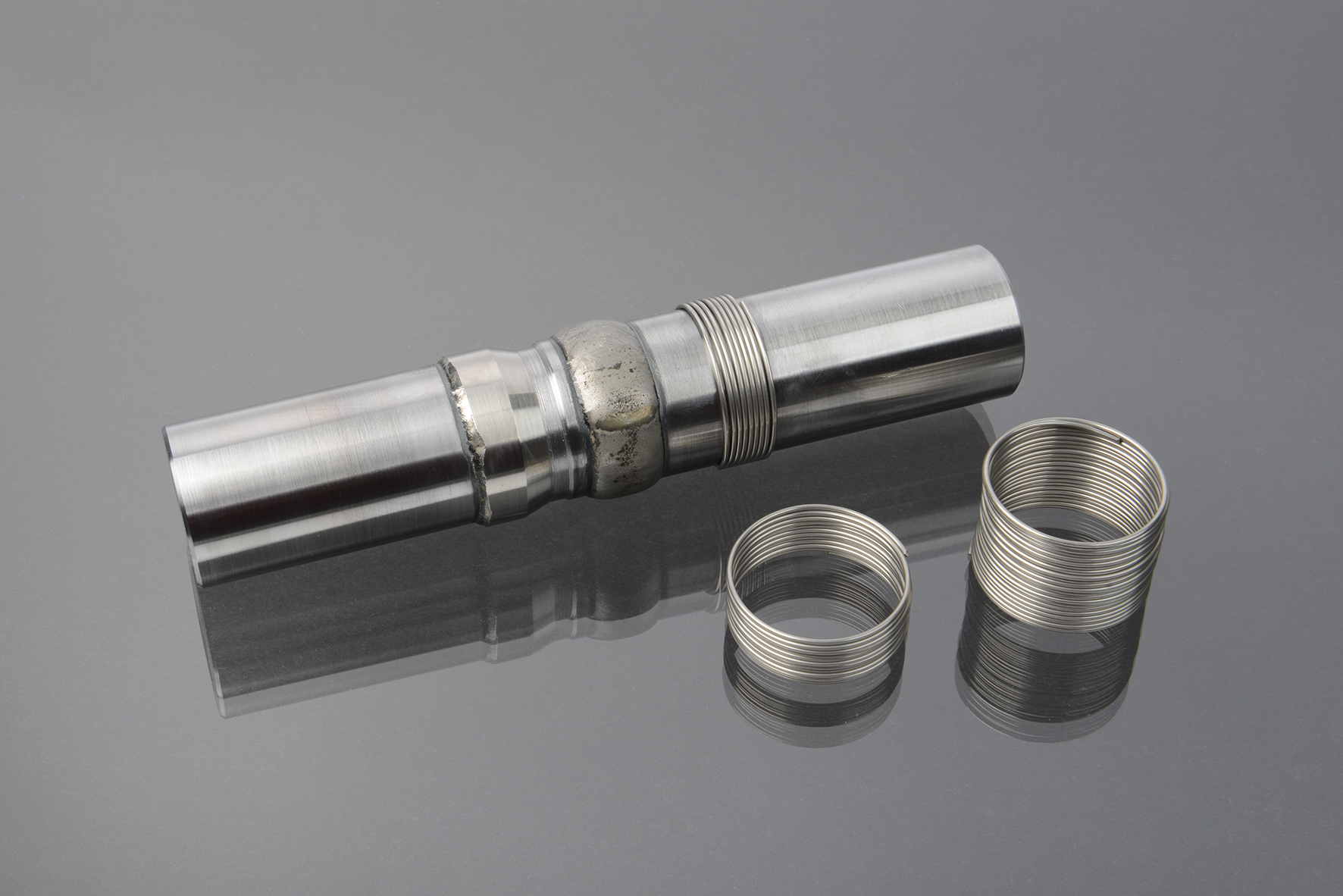
As transmitters of power and torque, shafts are inconspicuous yet irreplaceable components of cars, aircraft, ships or wind turbines. Billions of these components are produced worldwide every year in various sizes, most of them with shoulders or other surface features.
A team from the Fraunhofer Institute for Production Technology IPT has now developed the additive process »Express Wire Coil Cladding« (short, EW2C) for the surface treatment of shafts. The EW2C process is an alternative to common ablative processes of shaft machining such as turning, an alternative that not only conserves resources, but also lowers costs.
Express Wire Coil Cladding is a wire-based additive manufacturing process in which a component or structure is built up with a laser by joining metallic materials layer by layer. In contrast to classical laser metal deposition (LMD), the material is not continuously fed into the process as a wire. Instead, the wire first is pushed in the form of spirals to the desired locations on the shaft and then welded there with a high-power laser. Since the wire spirals are placed under tension on the shaft, they cannot slip during the laser process.
The EW2C process is very well suited for the deposition of thick layers: between 0.5 and 2 millimeters of material per layer, depending on the wire thickness. Even different combinations of materials are possible such that the part surface can be technically functionalized and geometrical shapes generated.
In order to improve the new process – for which a patent has already been filed – a team of the Fraunhofer IPT is working on further optimizing process stability and automating the process: Various devices for automated placement of the wire spirals on the shafts are already being tested.
Link:
Contact:
Fraunhofer IPT, Robin Day, robin.day@ipt.fraunhofer.de, +49 241 8904-161